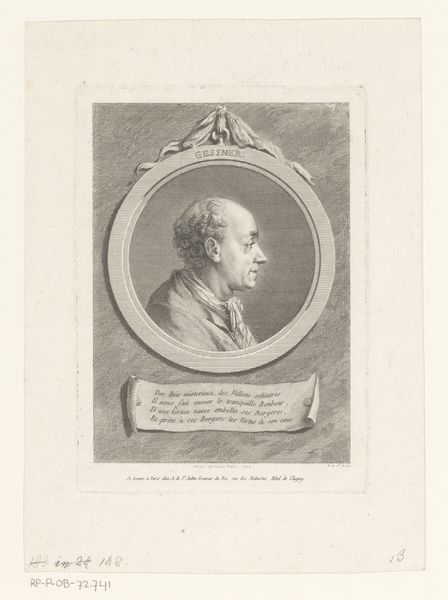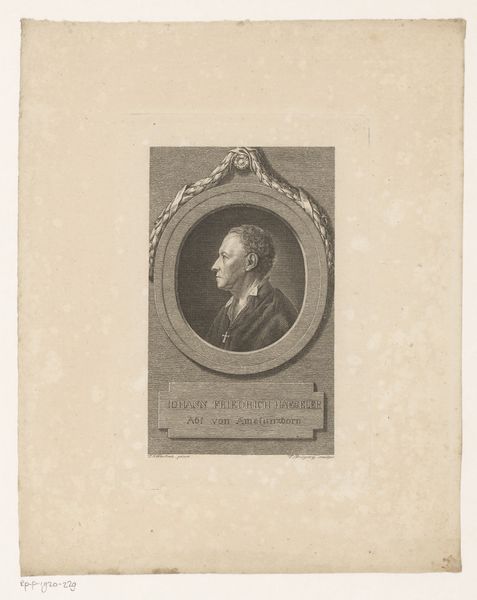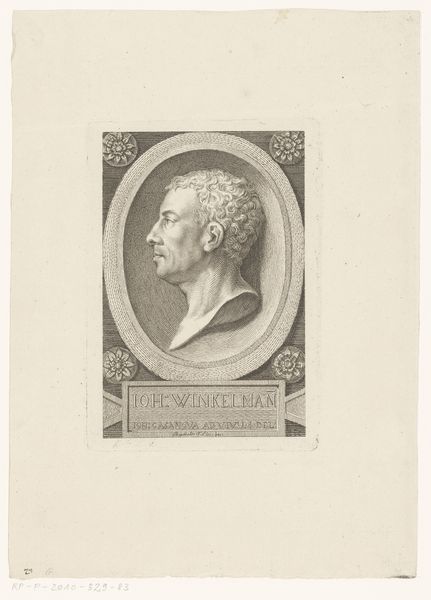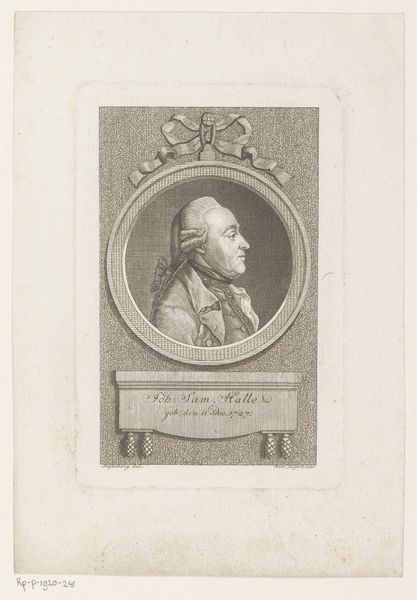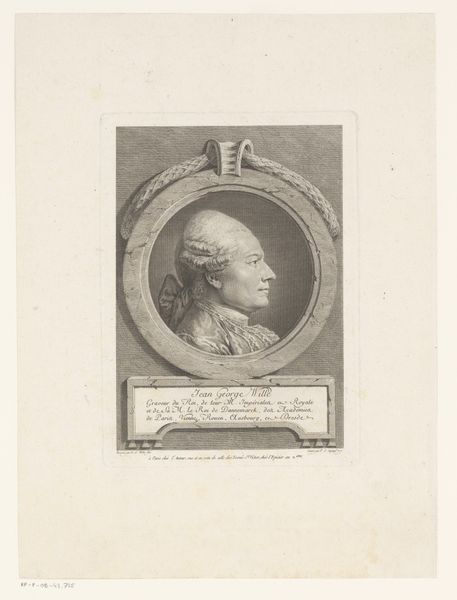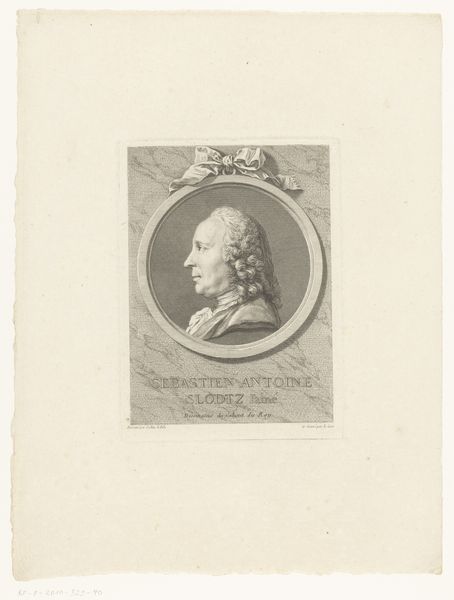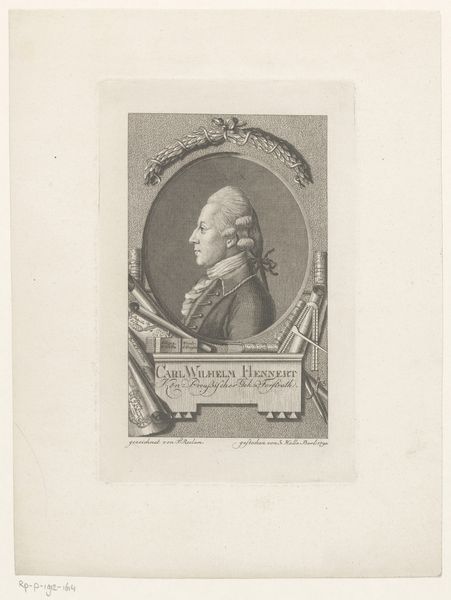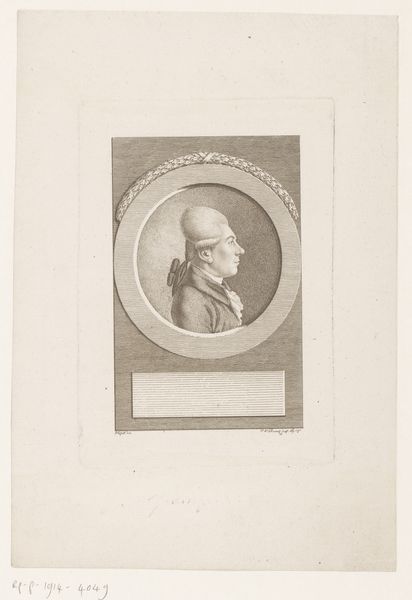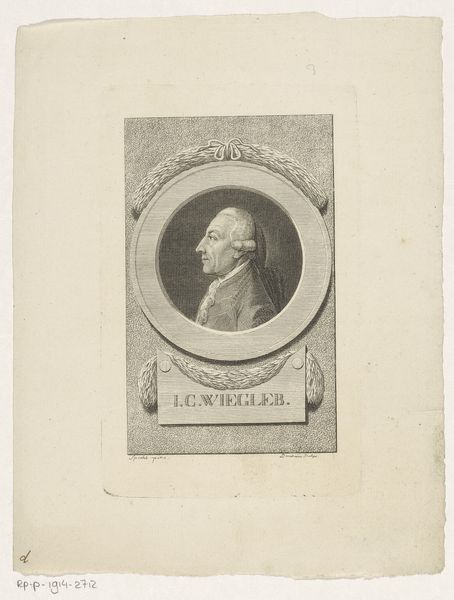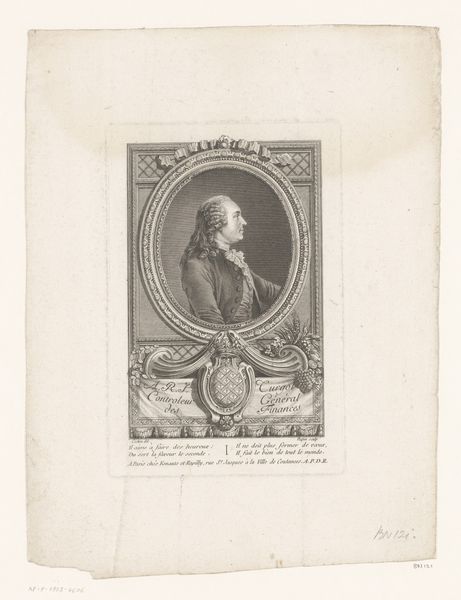
Dimensions: height 207 mm, width 147 mm
Copyright: Rijks Museum: Open Domain
Curator: Welcome. Before us, we see a portrait of Johann Caspar Lavater, created sometime between 1700 and 1785 by Georg Friedrich Schmoll. It's an engraving, ink on paper. Editor: You know, the first thing that strikes me is the sternness of his profile. He looks rather unforgiving, almost as if he's peering down at us through time. It feels severe but with a delicate, lace-like surround. Curator: Precisely. Note how Schmoll, working in the Neoclassical style, has chosen the engraving medium to highlight line and form. The portrait is set within an oval frame, adorned with a ribbon at the top, emphasizing order and rationalism, hallmarks of the era. Observe the precise, almost mathematical quality of the hatching. Editor: The very tight and orderly style really reinforces that idea of constraint and control. Funny how even a decorative ribbon feels so formal here. One wonders about the weight of expectations in that wig, though. I imagine it itchy! Curator: Indeed. The starkness isolates the sitter's gaze, emphasizing intellectual engagement and introspection. This contrasts with more ornate Baroque portraiture. The engraving process, with its clean lines and replicability, embodies the Enlightenment ideals of clarity and dissemination of knowledge. Editor: Definitely a departure from, say, a Rembrandt, where we might get a far richer sense of the person. I see control, certainly, but also something unsettling in that averted gaze, as if he is looking inward and trying not to show what's lurking there. He keeps his thoughts to himself. Curator: A astute observation. It's as if Schmoll captured not only Lavater's physical likeness but also an intellectual intensity. The engraving serves to create both a realistic image and a constructed image steeped in the philosophies of its era. Editor: The power of constraint, then. It’s remarkable how much it says about both the sitter and the period without even uttering a word. A man encased in his era. Curator: Agreed. This portrait speaks volumes about an era that prized reason and form, capturing something of the intellectual landscape itself.
Comments
No comments
Be the first to comment and join the conversation on the ultimate creative platform.
